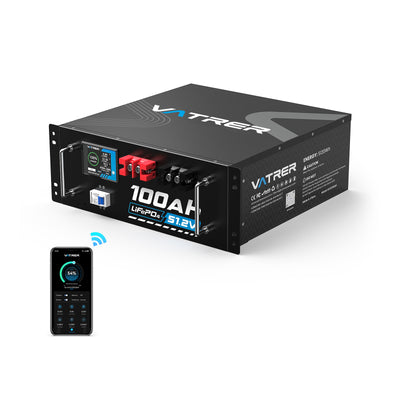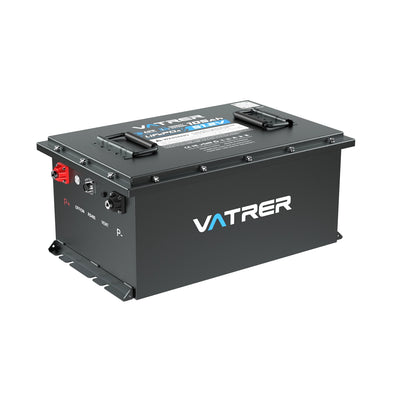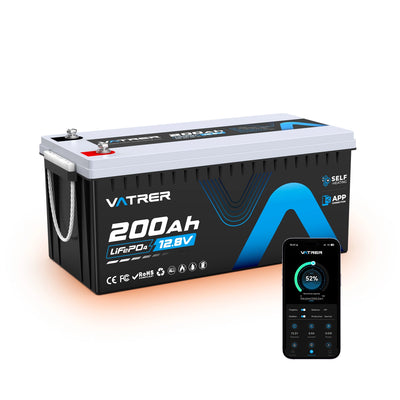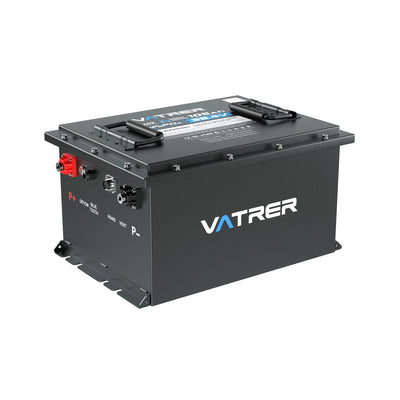
How to Choose Four-Wheeler Batteries
A four-wheeler, whether an ATV, UTV, or compact utility vehicle, relies heavily on its battery to keep the electrical system stable, support accessories, and deliver reliable starts in everyday rides or off-road adventures. Choosing the right wheeler battery isn't just about getting from point A to B. It affects safety, performance, and the long-term reliability of your machine.
This guide breaks down what matters most, how different types of ATV batteries compare, and how to select the one that fits your riding style, climate, and budget.

Understanding What a Four-Wheeler Battery Does in Your Electrical System
A four-wheeler battery functions differently from a typical car battery. ATVs and UTVs face vibration, mud, steep climbs, loads of accessories, and sometimes extreme temperatures. A suitable battery must therefore:
- Deliver quick bursts of power to ignite the engine.
- Maintain steady power output for lights, sensors, GPS units, winches, and infotainment.
- Stay stable during intense vibrations or rough terrain.
- Perform consistently in cold weather or hot climates.
In other words, the battery is not simply a starter, it's the backbone of your vehicle's electrical stability.
Key Parameters to Consider When Choosing a Four-Wheelers Battery
Choosing a battery becomes much easier when you understand the parameters that influence starting power, lifespan, fitment, and performance.
Voltage: The Foundation of Your Electrical System
Most four-wheelers use a 12V battery. Matching the voltage to your vehicle's system prevents component damage and ensures stable electrical performance.
Some performance-focused ATVs use 14V or 16V systems, but these require specialized wiring and should only be upgraded with guidance from the owner's manual or a mechanic.
Tips: If your ATV manual specifies 12V, stay with 12V. A mismatched voltage risks damaging sensitive electronics.
Capacity (Amp-Hours, Ah): How Long the Battery Can Deliver Power
Capacity tells you how much stored energy the battery can provide over time.
Higher Ah ratings mean:
- Longer runtime for accessories.
- Better support for winches, sound systems, or work tools.
- Stronger performance for long-distance riders.
However, higher capacity typically means a heavier battery, something riders on challenging terrain might feel. More suitable for Long trips, heavy accessories, work vehicles, or frequent off-road use.
Cold Cranking Amps (CCA): Reliable Starts in Cold Weather
Cold cranking amps (CCA) measure how much current a battery can deliver in cold climates.
You'll also see cold cranking amps CCAs, which refer to the same rating.
Higher CCA means better cold-starting performance.
This is crucial if you:
- Live in a cold region.
- Ride during winter.
- Have a large displacement engine.
A battery with a higher CCA provides more confidence and peace of mind in unpredictable conditions.
Reserve Capacity (RC): Backup Power for Emergencies
Reserve Capacity measures how long the battery can power essential systems if the charging system fails.
A higher RC rating helps maintain headlights, ignition, and safety electronics long enough to get you home safely.
Dimensions and Terminal Type: Ensuring a Perfect Fit
Your battery must fit securely inside the compartment.
Check:
- Length × Width × Height.
- Terminal orientation.
- Terminal type (top post, side post, quick-connect).
A loose fit can cause vibration damage, while mismatched terminals may cause poor connections or short circuits.
Weight: Affects Handling and Fuel Efficiency
Light batteries improve acceleration and maneuverability, especially noticeable in tighter trails or steep terrains.
This is why many riders upgrade to lithium batteries, known for being significantly lighter than lead-based options.
Comparing the Common Types of Four-Wheeler Batteries
Different battery chemistries perform differently depending on riding conditions and budgets. Understanding the common types helps narrow down your options.
a. Flooded Lead-Acid Batteries
These traditional batteries require regular maintenance, including water refills and corrosion checks.
- Affordable.
- Easy to service.
- Suitable for casual, low-demand use.
But they are heavier, less resistant to vibration, and slower to recharge. Suitable for budget-focused riders with minimal electronic accessories.
b. AGM (Absorbent Glass Mat) Batteries
AGM absorbent glass mat batteries trap the electrolyte in fiberglass mats, making them maintenance-free and resistant to vibration.
- Strong starting power.
- Solid performance in cold weather.
- Faster recharge.
- Excellent vibration resistance.
AGM is often the best all-around choice for ATVs and UTVs used for work or recreation.
c. Lithium Batteries
Lithium batteries have become the top choice for riders who want a high-performance upgrade.
- Very lightweight.
- High energy density.
- Fast charging.
- Strong power output.
They offer excellent performance in extreme temperatures and maintain consistent voltage under heavy loads. Upfront cost is higher, but lifespan and convenience often justify it. Suitable for riders seeking durability, lightweight handling, and long-term value.
d. Gel Batteries
Gel batteries use a thickened electrolyte, making them spill-proof and vibration-resistant.
- Good for deep-cycle use (winches, work accessories).
- Suitable for mixed terrain.
Availability is less common and performance tends to sit between AGM and lead-acid.
Battery Type Comparison Table
| Battery Type | Maintenance | Weight | Durability | Cold Performance | Best For |
|---|---|---|---|---|---|
| Flooded Lead-Acid | Require regular maintenance | Heavy | Moderate | Moderate | Budget riders |
| AGM | Maintenance free | Moderate | High | High | Off-road / daily use |
| Lithium | Maintenance free | Very light | Very high | Very high | Performance riders |
| Gel | Maintenance free | Moderate | High | Moderate | Deep-cycle needs |
How to Choose the Best Four-Wheeler Battery for Your Riding Needs
Selecting the right wheeler battery becomes much easier when you evaluate your riding conditions, electrical demands, climate, and long-term expectations together. Below is a practical assessment suggestion to help you make the best choice based on your actual needs.
1. Evaluate Your Riding Style and Frequency
Your riding habits strongly influence which battery chemistry makes sense.
- Short, occasional rides: A standard AGM works well because it balances cost, reliability, and low maintenance.
- Long-distance touring or full-day off-roading: A battery with higher Ah capacity and stronger vibration resistance, usually AGM or lithium, prevents voltage drops and ensures stable power output.
- High-intensity use: including hill climbs, sand sprints or frequent winch pulls. Lithium batteries offer lighter weight and resilient performance under constant load.
Tip: If your rides often involve using accessories for long periods while idling, choose higher Ah and higher RC for buffer power.
2. Consider Your Electrical System and Accessory Load
Modern ATVs often carry more add-ons than people expect.
Accessories that increase battery demand include:
- Winches
- Heated grips or heated seats
- LED bars and auxiliary lighting
- Navigation / GPS
- Bluetooth speakers or infotainment
- 12V coolers or portable tools
If your electrical load is high, prioritize:
- Higher Ah (for longer sustained power)
- Higher RC (for emergency capacity if the charging system falters)
- Lithium or AGM, because they deliver stable voltage under load
Tips: Flooded lead-acid batteries can struggle with repeated deep discharges caused by high accessory usage.
3. Match Battery Performance to Your Climate
Climate plays a huge role in choosing the right type of ATV battery.
- Cold climates (snow regions or winter rides): Prioritize higher CCA. AGM and lithium batteries perform better in cold weather than flooded lead-acid options.
- Hot climates: Heat accelerates battery wear. Lithium batteries offer better thermal stability and longer lifespan in extreme temperatures.
- Wide temperature swings: Choose chemistries with strong temperature tolerance (AGM or lithium).
4. Assess Your Terrain and Vibration Level
If your ATV often faces:
- rocky trails
- washboard roads
- steep climbs
- uneven farmland
- high vibration from utility work
Then you'll want a battery with strong structural integrity.
- AGM handles vibration well due to its sealed fiberglass-mat construction.
- Lithium batteries offer the best internal stability and lowest weight, improving handling on rough terrain.
Tips: Flooded lead-acid batteries are not ideal in harsh environments because their liquid electrolyte moves under impact.
5. Factor in Maintenance Preference and Ownership Experience
- No-maintenance preference: AGM and lithium batteries are both maintenance-free.
- Willing to check water levels and clean terminals: Flooded lead-acid can be acceptable if the budget is tight.
- Set-and-forget riding style: Lithium batteries are the easiest long-term option. They also last longer, reducing replacement frequency.
6. Consider Budget vs. Long-Term Value
Upfront cost and long-term savings often diverge.
- Flooded lead-acid batteries are the most affordable initially but have the shortest lifespan.
- AGM batteries offer strong performance at a moderate cost.
- Lithium batteries cost more upfront but provide high cycle life, lightweight handling, and reduced replacement frequency.
When comparing dollars spent over years of ownership, lithium often becomes the most cost-effective option.
7. Confirm Fitment: Size, Weight, and Terminal Layout
Before purchasing, verify:
- Battery dimensions
- Terminal orientation
- Weight tolerance of your compartment
- Compatibility with the factory charging system
Lithium upgrades also may require confirming charger compatibility, though modern systems often work without modification.
Choosing the best battery for your four-wheeler becomes clearer when you look at the entire picture, riding style, electrical demands, weather, terrain, maintenance expectations, and long-term budget. By evaluating these factors together, you can confidently decide whether a traditional flooded lead-acid battery, a vibration-resistant AGM, or a lightweight lithium battery is the right fit for your needs.
Maximizing Battery Life Through Proper Care
Even the best battery benefits from good habits.
Here's how to extend lifespan:
- Keep the Battery Charged: Charge after rides, especially if using accessories like headlights, coolers, or winches.
- Avoid Deep Discharges: Deep discharges shorten battery life across all chemistries and keep the charge above 50% whenever possible.
- Maintain Clean Terminals: Dirt and corrosion increase resistance and reduce charging efficiency.
- Protect Your Battery From Extreme Heat or Cold: Use wraps in winter and avoid long exposure to direct sunlight in summer.
Tips: Store the battery on a smart charger during off-season months to prevent self-discharge.
How Vatrer batteries can help you choose
When choosing a battery upgrade, many riders look for long life, strong power output, safe operation, and stable performance under load.
- This is where Vatrer battery stands out as a practical choice for ATVs and UTVs:
- High-grade LiFePO4 lithium chemistry designed for durability
- Advanced BMS for temperature, overcharge, and short-circuit protection
- Naturally maintenance-free design
- Lightweight construction for better handling
- Consistent starting reliability in extreme temperatures
- Faster charging and longer cycle life than typical lead-based options
If you plan to upgrade to a more modern and resilient power system, exploring a Vatrer lithium battery can help improve both reliability and long-term riding comfort.
Conclusion
Choosing a four-wheeler battery doesn't have to feel technical or overwhelming. Once you understand voltage, capacity, cold cranking amps CCA, battery type, and how these elements influence performance, the decision becomes much clearer.
A well-matched battery helps your ATV or UTV deliver solid starts, stronger accessory support, and smoother adventures on every terrain. And with proper maintenance, the right battery can support years of reliable use, whether you're commuting, exploring rugged trails, or working outdoors.
If you're looking to further enhance power, stability, and user experience, consider upgrading to the higher-tech Vatrer lithium series for an easier, more durable, and worry-free four-wheeler experience.
FAQs
Can I Use A Higher Ah Or Higher CCA Battery Than The Original One?
In most cases, using a battery with a higher Ah (capacity) or higher CCA than the original is acceptable and can even be beneficial, as long as the voltage and physical size still match the vehicle's requirements.
A higher Ah rating means the battery can support your electrical system for longer, which is helpful if you run winches, extra lighting, or other accessories.
A higher CCA rating helps ensure reliable starts in cold weather or with larger engines.
The main things to watch are fitment and charging: the battery must fit securely in the tray, and your charging system must be able to bring the larger capacity battery back to full charge during normal riding. If your rides are very short, an excessively large Ah battery may never fully recharge and could still fail early over time.
Can I Switch From Flooded Lead-Acid To Lithium Batteries On My ATV Or UTV?
Yes, many riders successfully upgrade from flooded lead-acid batteries to lithium batteries for reduced weight and better performance. The key is to keep the same system voltage and verify compatibility with your regulator and charger.
Lithium batteries with a built-in BMS are designed to work in most powersports charging systems, but it is wise to check the manufacturer's recommendations.
Some older chargers use higher voltages or equalization modes meant for flooded lead-acid batteries, which are not suitable for lithium chemistry.
Why Does My Four-Wheeler Battery Keep Going Flat Even When It Is New?
A new battery that keeps discharging usually points to an issue outside the battery itself.
Common causes include parasitic drains from accessories left wired directly to the battery, such as GPS units, phone chargers, aftermarket lights, or alarms that draw current even when the ignition is off.
Short, infrequent rides can also be a problem, because the charging system may not have enough time to replace the energy used to start the engine and power your electrical system.
In some cases, a failing regulator or stator can prevent proper charging altogether. A simple multimeter test across the battery terminals with the engine off and then running can help confirm whether the charging system is working. If the voltage does not rise when the engine is running, the problem is likely not the battery.
Is It Safe To Use A Car Battery Charger On My ATV Or Lithium Battery?
Using a random car charger is not always a good idea, especially for AGM or lithium batteries. Many older chargers are designed specifically for flooded lead-acid batteries and may charge at voltages or with modes that are too aggressive for modern chemistries.
Overcharging AGM batteries can shorten their life, while lithium batteries require a charge profile that respects their voltage limits and internal BMS. If you have an AGM or gel battery, look for a smart charger with selectable modes for those chemistries.
For lithium batteries, choose a charger that explicitly supports LiFePO4. A good charger will monitor voltage and current automatically and switch to maintenance mode when the battery is full, protecting your investment over time.
How Should I Store My Four-Wheeler Battery During The Off-Season?
For off-season storage, the main goals are to prevent deep discharge and protect the battery from harsh conditions.
Before storage, fully charge the battery and disconnect it from the vehicle to avoid parasitic draws from the electrical system. Store it in a cool, dry place where temperatures stay relatively stable, both extreme heat and freezing conditions can accelerate aging.
For AGM and lithium batteries, a quality smart maintainer set to the correct mode can keep the battery topped up without overcharging. Flooded lead-acid batteries may require periodic voltage checks and a refresh charge every few weeks. A properly stored battery will usually last several seasons longer than one left installed and ignored.
Can I Mix Different Battery Types Or Brands In The Same Vehicle?
Mixing different battery types, capacities, or brands in the same system is generally not recommended. Batteries with different internal characteristics charge and discharge at different rates, which can cause one to overwork while the other does less, leading to premature failure.
This is especially important when adding auxiliary batteries for extra capacity; all batteries in a bank should match in type, voltage, and similar age.
For most ATVs and UTVs, there is only one main starting battery, so the rule is simpler: replace the existing battery with a single, properly matched unit. If you decide to upgrade to lithium, do it as a complete replacement rather than pairing a new lithium unit with an older lead-acid battery elsewhere in the system.
Share



















































